- Clone
- 145-2C11; RB6-8C5; RA3-6B2; Ter-119; M1/70;
- Regulatory Status
- RUO
- Other Names
- Lin-1
- Isotype
- Armenian Hamster IgG/Rat IgG2a/Rat IgG2b
- Ave. Rating
- Submit a Review
- Product Citations
- publications
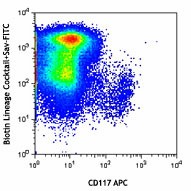
-

C57BL/6 mouse bone marrow cells were stained with Biotin Lineage Cocktail, followed by Sav-FITC and CD117 APC.
| Cat # | Size | Price | Quantity Check Availability | Save | ||
|---|---|---|---|---|---|---|
| 133307 | 500 tests | 259€ | ||||
The mouse lineage panel has been designed to react with cells from the major hematopoietic cell lineages, such as T lymphocytes, B lymphocytes, monocytes/macrophages, granulocytes, NK cells, and erythrocytes. This product includes individual vials of the following biotin antibodies: anti-mouse CD3ε, clone 145-2C11; anti-mouse Ly-6G/Ly-6C, clone RB6-8C5; anti-mouse CD11b, clone M1/70; anti-mouse CD45R/B220, clone RA3-6B2; anti-mouse TER-119/Erythroid Cells, clone TER-119.
Materials provided:
1. 500 tests (1 mL) each of: Biotin anti-mouse CD3ε, Biotin anti-mouse Ly-6G/Ly-6C (Gr-1), Biotin anti-mouse CD11b, Biotin anti-mouse CD45R/B220, Biotin anti-mouse Ter-119/Erythroid Cells
Materials not provided:
- Cell Staining Buffer (Cat. No. 420201)
- Isotype control reagents (Armenian hamster IgG, Rat IgG2a, Rat IgG2b)
Product Details
- Verified Reactivity
- Mouse
- Formulation
- Phosphate-buffered solution, pH 7.2, containing 0.09% sodium azide and 0.2% (w/v) BSA (origin USA).
- Preparation
- The antibody was purified by affinity chromatography, and conjugated with biotin under optimal conditions.
- Concentration
- Lot-specific (to obtain lot-specific concentration and expiration, please enter the lot number in our Certificate of Analysis online tool.)
- Storage & Handling
- The antibody solutions should be stored undiluted at 2°C and 8°C, and protected from prolonged exposure to light. Do not freeze.
- Application
-
FC - Quality tested
Magnetic particle separation - Verified - Recommended Usage
-
Each lot of these antibodies is quality control tested by immunofluorescent staining with flow cytometric analysis. For flow cytometric staining, the suggested use of this reagent is 2 µl of each antibody per million cells or 2 µl of each antibody per 100 µl of whole blood. It is recommended that the reagent be titrated for optimal performance for each application.
-
Application References
(PubMed link indicates BioLegend citation) -
- Morris SJ, et al. 1997. Development. 124(10):1929-1939
- Okada S, et al. 1992. Blood180 (12):3044-3050
- Spangrude GJ, et al. 1988. Science 241 (4861):58-62
- Spangrude GJ, et al. 1990. Exp Hematol. 18 (8):920-926
- Tan SL, et al. 2006. J. Immunol. 176:2872. PubMed
- Ito R, et al. 2012. Exp Hematol. 40:953. PubMed.
- Product Citations
-
- RRID
-
AB_11124348 (BioLegend Cat. No. 133307)
Antigen Details
- Distribution
-
T cells, B cells, monocytes/macrophages, granulocytes, NK cells, and erythrocytes
- Biology Area
- Immunology
- Antigen References
-
1. Morrison SJ, et al. 1997. Development 124:1929.
2. Okada S, et al. 1992. Blood 80:3044.
3. Spangrude GJ, et al. 1988. Science 241:58.
4. Spangrude GJ, et al. 1990. Exp Hematol. 18:920.
5. Tan SL, et al. 2006. J. Immunol. 176:2872. - Gene ID
- 104231 View all products for this Gene ID
- UniProt
- View information about Lineage on UniProt.org
Related Pages & Pathways
Pages
Related FAQs
- How many biotin molecules are per antibody structure?
- We don't routinely measure the number of biotins with our antibody products but the number of biotin molecules range from 3-6 molecules per antibody.
Other Formats
View All Lineage Reagents Request Custom Conjugation| Description | Clone | Applications |
|---|---|---|
| FITC anti-mouse Lineage Cocktail with Isotype Ctrl | 145-2C11; RB6-8C5; RA3-6B2; Ter-119; M1/70 | FC |
| PE anti-mouse Lineage Cocktail with Isotype Ctrl | 145-2C11; RB6-8C5; RA3-6B2; Ter-119; M1/70 | FC |
| Biotin anti-mouse Lineage Panel | 145-2C11; RB6-8C5; RA3-6B2; Ter-119; M1/70 | FC |
Customers Also Purchased
Compare Data Across All Formats
This data display is provided for general comparisons between formats.
Your actual data may vary due to variations in samples, target cells, instruments and their settings, staining conditions, and other factors.
If you need assistance with selecting the best format contact our expert technical support team.
-
FITC anti-mouse Lineage Cocktail with Isotype Ctrl

C57BL/6 bone marrow cells stained with FITC Lineage Cocktail... 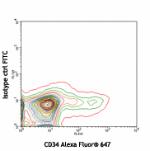
C57BL/6 bone marrow cells stained with FITC isotype control ... -
PE anti-mouse Lineage Cocktail with Isotype Ctrl
-
Biotin anti-mouse Lineage Panel

C57BL/6 mouse bone marrow cells were stained with Biotin Lin...
 Login / Register
Login / Register 










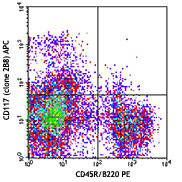
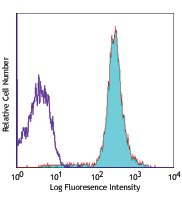
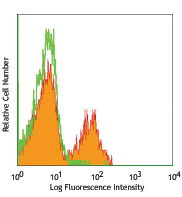



Follow Us